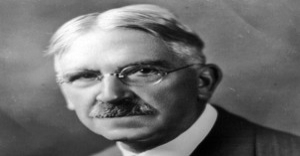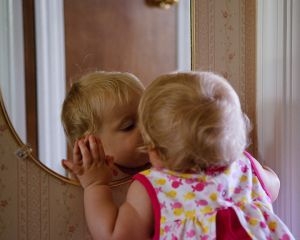Swiss psychologist Jean Piaget theorized in the pre-operational stage between two and seven years, children start using objects or actions to give meanings other than literal ones like using a pasta strainer as a hat. This is symbolic play and marks the beginning of creativity and conceptual learning. The following article provides the three main phases of symbolic play in the preoperational stage from 18 months to 5 years old and how educators can support their learners in each phase.
Symbolic Play At 18 Months Old
The earliest phase of symbolic play begins at around eighteen months of age. This is the time when toddlers start assigning other meanings to objects like using a block of wood as the TV remote or pushing it forward and back to the sound of ‘Vroom…vroom’ to imitate a toy car.
Supporting Symbolic Play At 18 Months Old
Symbolic play also includes unrealistic actions like pretending to feed a doll with a spoon or giving it a cup to hold. In order to nurture symbolic play at this stage, give them enough room for playacting. Remove clutter and create enough space for them to slide, sway or use their limbs in different ways. Nurture their budding social skills like interacting face to face, making eye contact and mimicking their expressions.
Symbolic Play At 3 Years Old
From around three years, children will start exploring other personas and settings during symbolic play. They will often role-play situations at home like family dinner time or classroom relationships like that of a teacher and student. When engaging in role-play at this stage, children will largely follow social norms like pretending to instruct a student as they take on the role of the teacher or serving food to dollies if they are acting as the Mommy at the dinner table.
Supporting Symbolic Play At 3 Years Old
Facilitate such interesting role play by keeping toys, blocks and other play material easily accessible like on low shelves but avoid suggesting what they use and how. Give them the choice to play alone, with their peers or include you.
Symbolic Play At 5 Years Old
As children’s imagination and social skills grow stronger from roughly five years, their symbolic play too becomes more sophisticated. They are not just taking on roles themselves but designating roles for their peers and negotiating with them actions related to such roles. So if a child acts as the ‘baby’ in a family role play, he or she may not just passively wait to be fed and bathed but may even role play demanding actions or tantrums like a ‘real’ child.
Supporting Symbolic Play At 5 Years Old
Also, symbolic play at this stage will start to include sequential steps and organised plans. This will be evident when children plan tea parties and the way they start by seating their dollies, laying the table and proceeding to pretend to eat. You can support such dramatic play through more storytelling sessions or the use of music. At this stage, the child’s awareness of sequence can also be incorporated into learning moments like introducing counting or showing that reading happens from left to right.
Further Reading
Jean Piaget - Cognitive Development - The following article provides information about Piaget, Piaget's 4Stages Of Cognitive Development, Piaget's Theories In Practice and more.
Child Theorists and Their Theories in Practice - The following is an overview of popular child theorists, a brief description of their theories and how to implement their theories into practice within the early childhood environment.
Child Theorists Posters - The following posters of 11 popular child theorists provide a brief description of their theory and how their theories are implemented into practice within the early childhood environment. These posters are great to use as a display within the service or as a reminder for Educators on the different types of child developmental theories which they can refer to and use within their documentation.
Reference:
Symbolic Play Ideas, Health Line







 Toddlers have a greater understanding of the world around them by this stage. Their cognitive development (also known as intellectual development and thinking skills) continues
Toddlers have a greater understanding of the world around them by this stage. Their cognitive development (also known as intellectual development and thinking skills) continues Infants begin to develop trust when parents begin to fulfil their needs. Such as changing an infant's nappy when needed, feeding on request and holding
Infants begin to develop trust when parents begin to fulfil their needs. Such as changing an infant's nappy when needed, feeding on request and holding Beginning at birth the construction of thought processes, such as memory, problem solving, exploration of objects etc, is an important part of an infant’s cognitive
Beginning at birth the construction of thought processes, such as memory, problem solving, exploration of objects etc, is an important part of an infant’s cognitive Toddlers want to do more on their own and do not like it when you begin to establish limits on their behaviour. Tantrums can become
Toddlers want to do more on their own and do not like it when you begin to establish limits on their behaviour. Tantrums can become Your preschooler is now able to focus their attention more accurately and is less influenced by distractions. The intensity of questions increase as your child
Your preschooler is now able to focus their attention more accurately and is less influenced by distractions. The intensity of questions increase as your child John Dewey is often seen as the proponent of learning by doing – rather than learning by passively receiving. He believed that each child was active,
John Dewey is often seen as the proponent of learning by doing – rather than learning by passively receiving. He believed that each child was active, Toddler advance and gains new skills in Gross Motor Development milestones achieved throughout earlier years. Co-ordination and challenges that could not be performed before such
Toddler advance and gains new skills in Gross Motor Development milestones achieved throughout earlier years. Co-ordination and challenges that could not be performed before such Erik Erikson developed a psychosocial theory to understand how we each develop our identities through eight stages of psychosocial development from infancy to adulthood. The
Erik Erikson developed a psychosocial theory to understand how we each develop our identities through eight stages of psychosocial development from infancy to adulthood. The At this point preschoolers begin to interact effectively with others. Play becomes more innovative and organized and “boyfriend” or “girlfriend” begins to emerge. Preschoolers have
At this point preschoolers begin to interact effectively with others. Play becomes more innovative and organized and “boyfriend” or “girlfriend” begins to emerge. Preschoolers have From now, babies begin to identify and respond to their own feelings, understanding other's feelings & needs and interact positively with others. A baby's social and
From now, babies begin to identify and respond to their own feelings, understanding other's feelings & needs and interact positively with others. A baby's social and


